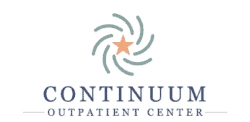Signs of Opioid Addiction:
Everything You Need to Know
What are the signs of opioid addiction? What are the dangers? What treatment options are available? Find out here.
Written and medically reviewed by the clinical team at Ripple Ranch Recovery Center, including licensed therapists, addiction specialists, and medical professionals.
Understanding Opioid Addiction
When searching for the signs of opioid addiction, we first must learn more about opioids. Opioids are substances doctors prescribe to treat pain. Oxycodone and morphine are some examples of prescription opioids.
Opioid addiction, also known as opioid use disorder (OUD), is the compulsive use of opioids even when they are no longer needed. Often, people start using opioids for legitimate reasons, such as pain management.
However, opioids can derive intense pleasure, leading to unhealthy cravings and losing control over its use. Opioid addiction affects over 16 million people worldwide, 2.1 million in the United States, and there are over 120,000 deaths every year due to opioid use.1

Table of Contents
Learn More About Ripple Ranch Recovery Center
Our team is standing by to discuss your situation and options. Your call is fully confidential, and no obligation is required
Distinguishing Signs of Opioid Addiction
It is important to be aware of potential signs of an opioid addiction. Here are some distinguishing signs of opioid addiction:
- Physical Changes: One of the signs of opioid addiction is a change in a person’s physiology. Opioid use may cause constricted pupils, sudden weight loss, poor motor skills, and profuse sweating. A person may also experience physiological changes like nausea and diarrhea due to withdrawal.
- Behavioral Changes: People dependent on opioids may begin to exclude themselves from social activities and hobbies that were once important to them. They may also prefer isolating themselves from friends and families and spending time alone or with others with an opioid addiction.
- Prolonged and Unhealthy Use: Another sign of opioid addiction is prolonged and unhealthy use. People using the substance may find it difficult to stop even when it harms their health, safety, finances, or relationships.
- Uncontrollable Cravings: Uncontrollable cravings are one of the signs of opioid addiction. Opioid use may trigger the excessive release of dopamine in the brain, creating a strong sense of euphoria or pleasure. Despite the awareness of the negative impact, the compulsion to satisfy cravings can override sound decision-making.
- Increased Tolerance for Opioids: Due to the prolonged consumption of opioids, a person may need higher doses of opioids to achieve the same effects, leading to severe addiction. As tolerance increases, recommended dosages for pain relief become less effective, causing people to increase dosages to regain the desired effects.
How Choice of Opioids Can Affect Signs of Opioid Addiction
Different opioids have varying potencies, routes of administration, and effects on the body, determining how addiction manifests. Here are some ways in which the choice of opioids can impact the signs of opioid addiction:
Potency
The signs of opioid addiction in a person may be different and more pronounced due to the potency of the specific opioid they consume.
Potent opioids like fentanyl can impact tolerance and increase the chances of addiction. The potency of an opioid may also result in an accelerated need for higher doses.
Mode of Administration
People take opioids by oral ingestion, smoking, or injection. The most dangerous mode is through injections, as it can lead to more rapid and intense effects. For those who administer this technique, the visible markings or injection may also suggest signs of opioid addiction.
Duration of Action
The time that an opioid takes to become effective varies. Opioids like oxycodone, which have fast kick-ins and short-lasting effects, may lead to a more frequent cycle of use and withdrawal, contributing to addiction.
While opioids like fentanyl and morphine have long-lasting effects, they still contribute to addiction and affect the signs of opioid addiction a person may exhibit.
Physical and Psychological Effects of Opioid Addiction
Opioid addiction may affect a person both physically and psychologically. The effects of opioid addiction on physical health include respiratory issues, skin discoloration, and muscle pain.
The psychological effects of an opioid addiction may include mood swings, memory loss, impaired decision-making, and social isolation.
How Physical and Psychological Effects Vary Depending on Prescription or Illicit Opioids
The physical and psychological effects of opioid addiction can vary depending on the specific type of opioid, whether it’s a prescription medication or an illicit substance.
Here’s how they can differ:
Prescription Opioids
The effects of prescription opioids may include:
- Physical Effects: Prescription opioids like oxycodone, hydrocodone, and codeine may lead to the same physical effects as illicit opioids. They may cause physical dependence, respiratory issues, or depression. However, because they are often taken as prescribed and under the guidance of a healthcare provider, their signs and effects may develop more slowly compared to illicit use.
- Psychological Effects: Just like illicit opioids, the psychological effects of prescription opioids may include mood swings and impaired decision-making. However, those who start with a legitimate prescription may be less likely to engage in high-risk behaviors associated with illicit drug use.
Illicit Opioids
The effects of illicit opioids may include:
- Higher Risk of Overdose: Illicit opioids, such as heroin and fentanyl, can be more potent than prescription opioids. Potency, in this case, means a higher risk of overdose and eventual death.
- Risk of Infectious Diseases: The intravenous administration of illicit opioids can be associated with a higher risk of contracting diseases like HIV/AIDS. People who have an opioid addiction often share needles with other people without regard for their safety and health. According to a United Nations report, more than 1.4 and 1.2 million people with opioid addiction were living with HIV and hepatitis C, respectively.2
- Legal Consequences: All over the world, it is illegal to use and possess illicit opioids like heroin or fentanyl. Possession of these drugs may lead to criminal charges and eventually imprisonment. About 1.16 million Americans are arrested annually for selling or possessing illegal substances.3
Signs of Opioid Addiction in Adolescents, Adults and Elderly People
Opioid addiction can affect individuals of different age groups, and the signs of addiction may vary based on developmental stages and life circumstances. At Ripple Ranch, we treat opioid addiction in any age group.
It is essential to become aware of signs of an opioid addiction, no matter the age. Here are some signs of opioid addiction in adolescents, adults, and older adults:
Signs of Opioid Addiction in Adolescents
The signs of opioid addiction in adolescents or young adults include the following:
- Change in behavior
- Social isolation and withdrawal
- Decline in academic performance
- Poor personal hygiene and disinterest in grooming
- Unexplainable weight changes
- Irritability and mood swings
Signs of Opioid Addiction in Adults
The signs and symptoms of an opioid addiction in adults involve:
- Decline in work performance
- Conflicts at the workplace
- Unexplainable financial difficulties
- Unnecessary legal issue
- Decline in physical appearance
- Insomnia and hypersomnia
Signs of Opioid Addiction in Elderly People
The signs of opioid addiction in the elderly population include:
- Worsening of existing medical condition
- Loss of independence
- Decline in cognitive function
- Early death
- Isolation
- Increased risk of fall
How Healthcare Professionals Diagnose Signs of Opioid Addiction
Accurately diagnosing opioid addiction and distinguishing it from other mental health disorders requires a comprehensive approach. Our healthcare providers at Ripple Ranch rely on various methods during the diagnostic process.
Here are key strategies used to diagnose opioid use disorder:
Assessments
Professionals at Ripple Ranch conduct a detailed assessment of a person’s condition before concluding they have an opioid addiction.
Assessment is done by considering a patient’s medical history, previous treatment, and pattern of opioid use. Assessment helps to identify genetic factors, trauma, stress, and depth of addiction.
Interviews
After assessments, professionals move to have an open and honest conversation with the patients. During interviews at Ripple Ranch, patients are encouraged to share their experiences and struggles with addiction.
Our healthcare professionals also observe the patient’s mood and demeanor during interviews for signs of discomfort and agitation.
Physical Examination
For an accurate diagnosis of opioid addiction, a physical examination of the patient is required. Ripple Ranch’s professionals look for signs like injection marks or pinpoint pupils during physical examinations. Physical examination also allows professionals to assess the nature and location of the patient’s pain and determine if opioid use is necessary.
Laboratory Tests
Addiction can be diagnosed with the aid of laboratory tests such as urine and blood tests. These tests show evidence of opioid use and may help identify the presence of other substances. Results from drug testing help us at Ripple Ranch to create a treatment plan for our patients.
Role of Harm Reduction Strategies in Addressing Opioid Addiction
Harm reduction strategies help to address opioid addiction by minimizing the negative consequences of opioid use. These strategies include distributing naloxone to prevent overdoses, providing sterile needles to reduce disease transmission, and linking people to treatment services.
To prevent deadly overdoses, it also offers supervised consumption areas and works to reduce stigma and discrimination.
Other key components involve legal reforms, such as decriminalization and counseling. By enhancing safety, minimizing harm, and creating a more sympathetic approach to managing opioid addiction, harm reduction strategies benefit public health.
Integration of Harm Reduction Strategies Into the Treatment of Opioid Addiction
Integrating harm reduction strategies into treatment for opioid addiction involves incorporating practical and evidence-based approaches that prioritize the well-being of patients.4
Integration of Harm Reduction Strategies Into the Treatment of Opioid Addiction
Below are ways harm-reduction strategies can be integrated into opioid addiction treatment at Ripple Ranch:
- Medication-Assisted Treatment (MAT): Medications such as naltrexone, also known as opiate antagonist, methadone, or buprenorphine, help manage cravings and withdrawal symptoms. MAT helps stabilize patients, reducing the risk of overdose and improving overall health.
- Distribution of Naloxone: Naloxone is a medication that helps to reverse or reduce the effects of opioids in the body. As a harm reduction strategy, naloxone should be distributed and made available to persons with opioid addiction to reduce the risk of overdose. However, distribution should only be done after educating people on the use and administration of the drug.
- Needle Exchange Programs: Providing sterile needles and syringes helps reduce the risk of infectious diseases such as HIV and hepatitis. The aim of needle exchange programs is to offer services within treatment centers and prevent the spread of blood-borne infections among those who administer opioids intravenously.
- Supervised Consumption Services: As a harm reduction strategy, it offers a safe and supervised environment for people to use opioids to prevent addiction or overdose. It is also a means for people who have previously gotten treatment for opioid addiction to access opioids in supervised quantities, preventing relapse.
- Education and Counseling: Our professionals at Ripple Ranch integrate this strategy into individual and group sessions to address treatment and relapse prevention activities. The harm-reduction strategy aims to provide education on the safer use of opioids and the risks associated with unhealthy use.
How Regional and Demographic Variations Affect the Signs of Opioid Addiction
Signs of opioid addiction can vary regionally and among different demographic groups due to factors. The effects of an opioid addiction can develop different consequences depending on the region and other demographic areas.
Here is a list of such factors:
- Availability and accessibility to opioids
- Urban v. Rural disparities when it comes to getting treatment
- Mild law enforcement practices
- Cultural attitudes toward substance use
- Age and generational differences
- Race and ethnicity
- Gender variations
- Childhood trauma
Recovery and Treatment Process at Ripple Ranch
At Ripple Ranch, we take a comprehensive and individualized approach to supporting persons struggling with opioid addiction. Our recovery plan prioritizes the physical, emotional, and social aspects of addiction.
Here is a general overview of what our recovery plan at Ripple Ranch entails:
- Assessment and Evaluation
- Medical Detoxification
- Medication-assisted treatment
- Group and individual therapy
- Education and Counseling
- Holistic wellness approaches like yoga and meditation
- Aftercare and Transitional support

Ripple Ranch’s Mission
At Ripple Ranch, we aim to provide a safe and supportive environment for our patients to address their mental health challenges. Our priority is empowering patients to recover, prevent relapse, and improve overall well-being.
Ripple Ranch is a haven well-equipped to address a variety of mental health challenges and conditions, such as:
- Alcoholism
- Substance Use Disorders
- Anxiety
- Depression
- Post-Traumatic Stress Disorder
- Eating Disorders
- Kleptomania
- Compulsive Gambling
- Bipolar Disorder
- Personality disorders
Our Services at Ripple Ranch
Reliable and competent healthcare professionals supervise treatment services and programs. Ripple Ranch’s treatment services include but are not limited to:
- Dialectic Behavioral Therapy (DBT)
- Medication Assisted Treatment (MAT)
- Art therapy
- Meditation
- Nutritional Support and counseling
- SMART recovery
- Psychoeducational Groups
- Yoga
- Trauma-focused therapies
Contact Us Today
Are you or a loved one struggling with opioid addiction? Reach out to Ripple Ranch today. We focus on creating a supportive environment for every individual.
Our team of hardworking, friendly, and reliable therapists works to help improve your mental health and guide you toward a better quality of life. Schedule a consultation with us to understand how we can help determine signs of opioid addiction.
Resources
- 1https://www.ncbi.nlm.nih.gov/books/NBK553166/
- 2https://www.unodc.org/unodc/frontpage/2022/June/unodc-world-drug-report-2022-highlights-trends-on-cannabis-post-legalization--environmental-impacts-of-illicit-drugs--and-drug-use-among-women-and-youth.html
- 3https://drugabusestatistics.org/drug-related-crime-statistics/
- 4https://www.ncbi.nlm.nih.gov/pmc/articles/PMC8218967/





